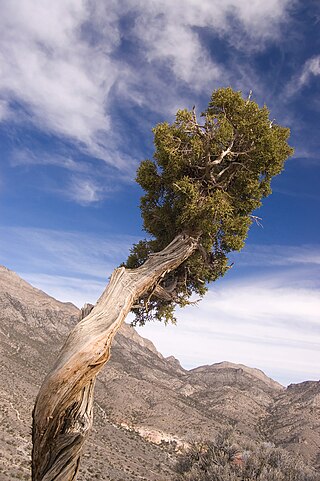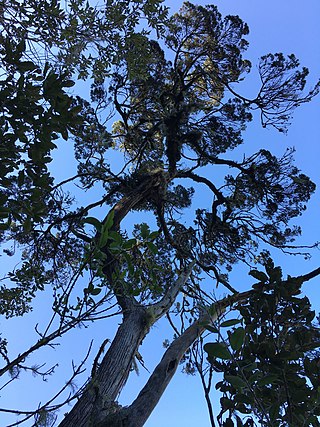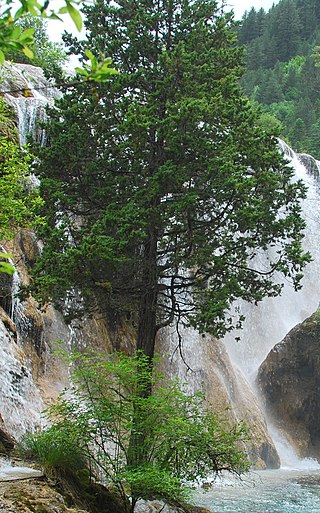
Junipers are coniferous trees and shrubs in the genus Juniperus of the cypress family Cupressaceae. Depending on the taxonomy, between 50 and 67 species of junipers are widely distributed throughout the Northern Hemisphere, from the Arctic, south to tropical Africa, throughout parts of western, central and southern Asia, east to eastern Tibet in the Old World, and in the mountains of Central America. The highest-known juniper forest occurs at an altitude of 4,900 metres (16,100 ft) in southeastern Tibet and the northern Himalayas, creating one of the highest tree lines on earth.

Juniperus indica, the black juniper, is a juniper native to high-altitude climates in the Himalaya, occurring in Pakistan, India, Nepal, Bhutan and China.

Juniperus flaccida is a large shrub or small tree reaching 5–10 metres tall. It is native to central and northern Mexico and the extreme southwest of Texas, United States. It grows at moderate altitudes of 800–2,600 metres, on dry soils.
Juniperus barbadensis, also known as West Indian juniper, is a species of conifer in the family Cupressaceae endemic to the West Indies.

Juniperus blancoi is a species of conifer in the family Cupressaceae. It is endemic to Mexico.

Juniperus comitana is a species of conifer in the family Cupressaceae. It is found in parts of Guatemala and Mexico.
Juniperus convallium is a species of conifer in the family Cupressaceae. It is a tree that is found only in the mountains of the Chinese provinces of Tibet, Qinghai, and Sichuan.

Juniperus durangensis is a species of conifer in the family Cupressaceae.

Juniperus formosana, the Formosan juniper, is a species of conifer in the family Cupressaceae. It is a shrub or tree to 15 metres tall, found in China and in Taiwan.
Juniperus gamboana is a species of conifer in the family Cupressaceae. It is found in Guatemala and Mexico, where it is threatened by habitat loss.
Juniperus komarovii is a species of conifer in the family Cupressaceae. It is found only in China.

Juniperus monticola, or mountain juniper, is a species of conifer in the family Cupressaceae. It is found only in Mexico.
Juniperus pingii is a species of conifer in the family Cupressaceae. Commonly used in bonsai, it can produce a correct proportional miniature version of the full size tree. It is native only to China. It is named after the Chinese botanist Wan Chun Cheng.
Juniperus saltillensis is a species of conifer in the family Cupressaceae.

Juniperus saltuaria is a species of conifer in the family Cupressaceae. It is endemic to southern China and Tibet. The trees grow up to 20 metres tall.
Pinus jaliscana, the Jalisco pine, is a species of conifer in the family Pinaceae.

The Trans-Mexican Volcanic Belt pine–oak forests is a subtropical coniferous forest ecoregion of the Trans-Mexican Volcanic Belt of central Mexico.
Quasieulia jaliscana is a species of moth of the family Tortricidae. It is found in the Mexican states of Jalisco, Oaxaca, Puebla and Veracruz.
Chamelania jaliscana is a species of moth of the family Tortricidae. It is found in Jalisco, Mexico.
Abies jaliscana, the Jalisco fir, is a species of conifer in the family Pinaceae, native to western Jalisco, Mexico. A tree reaching 30 m (98 ft), it was considered by some authorities to be a subspecies or variety of Abies guatemalensis.











